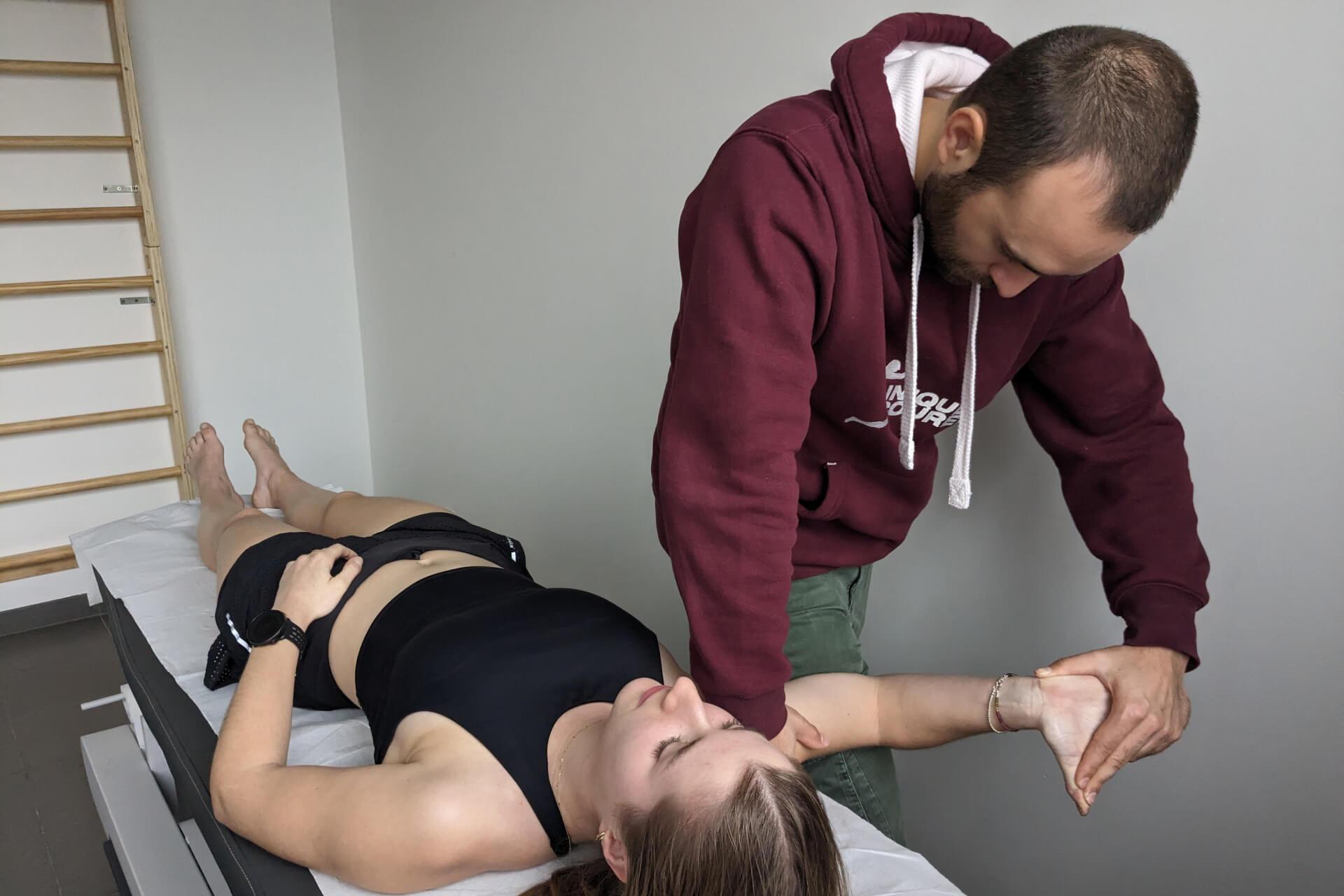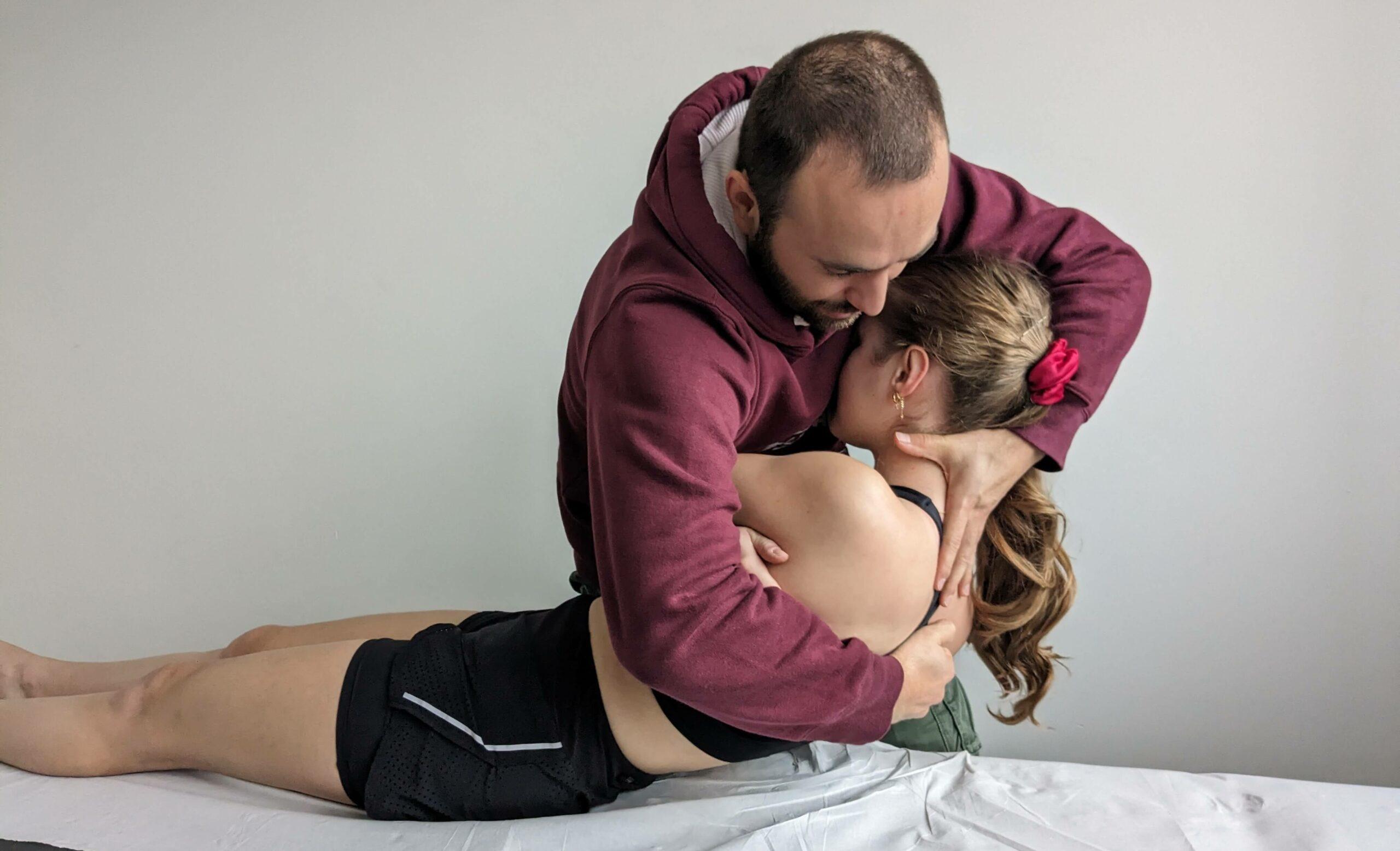Orthopedic Manual Therapy
Orthopedic Manual Therapy is a specialized field of physiotherapy/physical therapy for the management of neuromusculoskeletal problems, based on clinical reasoning, using a highly specific treatment approach including manual techniques and therapeutic exercises. Orthopedic Manual Therapy embraces and is driven by clinical and scientific evidence within the bio-psychosocial model of health care.
MATHERA is the only Belgian representative association for manual therapists, recognized by and in collaboration with AXXON PTiB, physical therapy in Belgium.
Among the more than 25,000 physiotherapists working in Belgium, I am one of the 720 practitioners affiliated to ABSG Manual Therapy / MATHERA. I’m also one of 115 members of OMT-France.

Manual therapy, a guarantee for your freedom of movement
The causes of your pain and movement dysfunctions can be identified and treated with the help of an Orthopedic Manual Therapist. He or she can help you regain your freedom of movement, and relieve acute or persistent neuro-musculoskeletal pain.
The Orthopedic Manual Therapist offers targeted clinical expertise and helps you to :
Recover quickly using manual techniques and other musculoskeletal physiotherapy techniques
Achieve long-term recovery, using a variety of techniques including therapeutic exercises
Stay healthy, through education and promotion of a healthy, active lifestyle

What is an Orthopedic Manual Therapy session?
Research
Every treatment begins with a medical history and physical examination, which helps us to understand your complaint as fully as possible. Using provocation tests and functional tests (joint, muscle, neurological, etc.), it will be possible to identify the source, degree of severity and cause of the pain.
The search is completed by identifying the factor(s) triggering your pain, their evolution and/or associated dysfunctions. Depending on the results, we will carry out further research to assess the condition and function of muscles, joints, the nervous system, connective tissue and general health. Psychological factors, not least, are also taken into account.
Treatment program
The Orthopedic Manual Therapist uses “hands on” techniques (genuinely manual techniques on the part of the therapist, during which you will be largely passive) and/or “hands off” techniques (cognitive/behavioral and functional education and/or active exercises performed under the therapist’s control), depending on his or her clinical reasoning and hypotheses.
These techniques include :
passive segmental joint mobilizations, harmonic movements (Maitland or Kaltenborn type)
HVLA (“High Velocity Low Amplitude”) joint manipulations, also known as “thrusts
myotensive joint and myofascial mobilizations
mobilization exercises with movements (Mulligan-type) or repeated active movements at the end range of motion (McKenzie-type)
neurodynamic techniques targeting neural tissue and connective tissue surrounding the nervous system (in cases of neurodynamic dysfunction)
strengthening and endurance exercises, neuromuscular facilitation techniques, stretching, trigger point techniques (when a myofascial component is involved)
sensory-motor reprogramming, proprioception and motor control exercises (work on deep stabilizing muscles)
advice on physical activity, posture and lifestyle to promote healing, limit the risk of recurrence and promote health
therapeutic education (neurophysiology of pain, cognitive-behavioral approach), gradual exposure to movements associated with irrational fear, etc.
The Orthopedic Manual Therapist may need to use a variety of tools, such as a gymnastic ball, elastic bands, weights, free bars and weightlifting machines, suspension straps, biofeedback tools (pressure-variation air pads, headphones with a laser to aim at a target), (kinesio)taping, adapted measuring tools (manual force dynamometer, tape measure, goniometer), a mirror, hooks, a Knife… The treatment is completed by exercises to be performed at home.

What are the indications for orthopedic manual therapy?
Vertebral disorders (lumbago/lumbago, dorsalgia, torticollis/cervicalgia, sciatica, cervico-brachialgia) are the most frequent reasons for consultation. They are also a frequent subject of study.
However, other NMSK disorders, such as upper and lower limb pain, tendinopathy and headaches (cervicogenic or tension), are also a reason for treatment and are frequent indications.
The manual therapist can help relieve nociplastic pain associated with central sensitization.
 info@hugokine.com
info@hugokine.com +32 4 73 95 42 83
+32 4 73 95 42 83